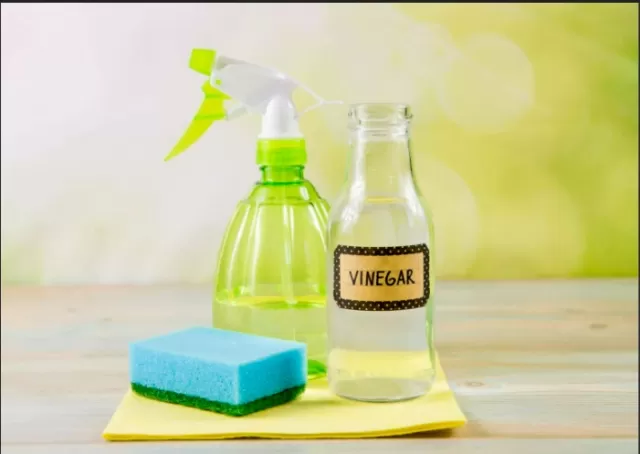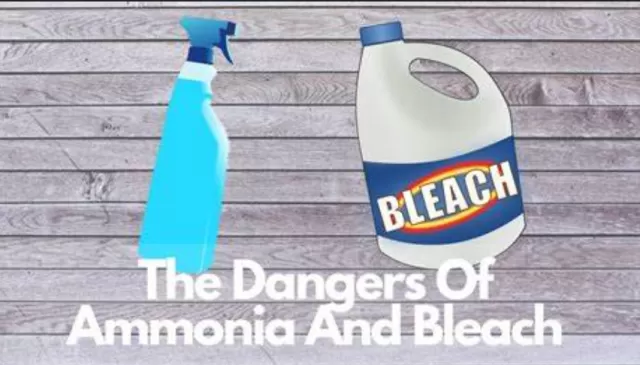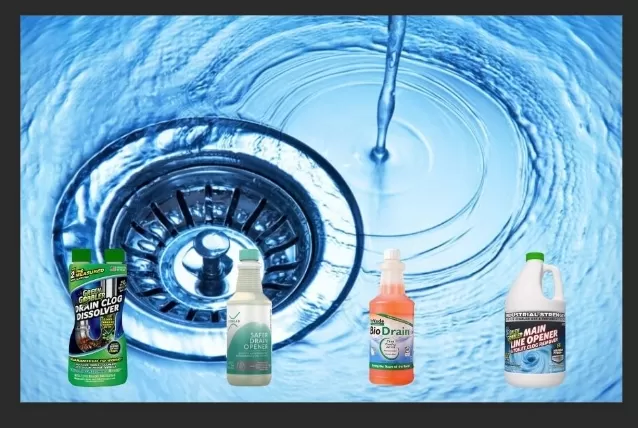Hazardous Combinations of Common Cleaning Products. When it comes to ensuring a thorough clean in high-touch areas like the kitchen and bathroom, it’s common to use multiple cleaning products. However, exercising caution is paramount, as certain combinations can create toxic fumes and gases that pose serious health risks when inhaled. To prioritize safety during your cleaning routine, here are several common products that should never be combined:
Bleach and Vinegar:
Mixing these two cleaning products produces chlorine gas, which can be irritating to the eyes and airways and lead to serious breathing problems.
Hydrogen Peroxide and Vinegar:
Combining hydrogen peroxide and vinegar can create peracetic acid, a corrosive substance that can irritate the eyes, skin, and respiratory system.
Bleach and Ammonia:
This combination produces chloramine, a toxic gas that irritates the eyes and airways, leading to difficulties in breathing and potential damage to lung tissue.
Bleach and Rubbing Alcohol:
Mixing bleach and rubbing alcohol can result in the formation of chloroform, a highly toxic substance causing major organ damage and surface corrosion.
Different Drain Cleaners:
Combining various drain cleaners with different chemical makeups can lead to chemical reactions generating heat, causing thermal burns, and potentially releasing toxic gases.
By avoiding these hazardous combinations and following proper usage instructions for individual cleaning products, you can maintain a safe and effective cleaning routine in your home. Prioritizing safety ensures a healthy environment for both yourself and those around you.
Understanding the Risks: Bleach and Vinegar Combination

While bleach and vinegar individually serve as potent household cleaning agents, it is crucial to avoid combining them.
Maryann Amirshahi, Co-Medical Director of the National Capital Poison Center, warns against this practice, highlighting that the mixture results in the production of chlorine gas. This gas can be highly irritating to the airways and eyes, potentially leading to severe respiratory issues.
Furthermore, when chlorine gas reacts with water, it can give rise to an acid that has the potential to cause skin burns. To ensure a safe and effective cleaning routine, it is imperative to use these cleaning supplies separately and adhere to recommended usage guidelines for each.
Cautionary Note: Hydrogen Peroxide and Vinegar Combination
It’s important to exercise caution when considering the combination of hydrogen peroxide and vinegar for cleaning purposes.
According to Alicia Sokolowski, President and co-CEO of AspenClean, this mixture can give rise to peracetic acid, a corrosive substance known to irritate the eyes, skin, and respiratory system. Furthermore, peracetic acid poses potential harm if ingested. The release of vapors during the combination of these two cleaning agents can also be hazardous to inhale. To ensure the safety of your cleaning practices, it is advisable to use hydrogen peroxide and vinegar separately, adhering to recommended guidelines for each, and avoiding their simultaneous application. Prioritizing safety measures contributes to a secure and effective household cleaning routine.
Critical Warning: Avoiding Bleach and Ammonia Combination

The combination of bleach and ammonia poses an extreme danger due to the production of chloramine, a highly toxic gas.
Maryann Amirshahi emphasizes the severity of this chemical reaction, stating that chloramine can cause irritation to the eyes and airways, leading to difficulties in breathing. In more concentrated forms, exposure to chloramine can result in nausea, vomiting, and damage to lung tissue.
Given the serious health risks associated with this combination, it is crucial to steer clear of mixing bleach and ammonia in any cleaning application. Prioritizing safety and understanding the potential consequences underscores the importance of responsible use and handling of household cleaning products.
Crucial Warning: Avoid Mixing Bleach and Rubbing Alcohol
The amalgamation of bleach and rubbing alcohol is a hazardous practice with detrimental effects on both health and surfaces.
Kathy Cohoon, Director of Franchise Operations at Two Maids, underscores the dangers, noting that the acidic properties of this mixture lead to the formation of chloroform, a highly toxic substance. The consequences of exposure include the risk of major organ damage. Additionally, the combination acts as a corrosive agent, capable of breaking down surfaces it comes into contact with. To ensure the well-being of both individuals and the materials being cleaned, it is imperative to refrain from mixing bleach and rubbing alcohol, prioritizing safe and responsible cleaning practices.
Cautionary Note: Avoid Mixing Different Drain Cleaners

The combination of different drain cleaners poses a potential danger as they are not uniformly formulated, each containing a distinct chemical makeup.
Maryann Amirshahi emphasizes the risk, noting that most drain cleaners already contain potent chemicals, and mixing them can exacerbate the situation. Drain cleaners may consist of strong acids or bases, and the amalgamation of these can result in a chemical reaction that generates heat, potentially causing thermal burns.
Moreover, depending on the specific products involved, the mixture may release toxic gases. To ensure safety and prevent adverse reactions, it is crucial to refrain from mixing different drain cleaners and to follow usage instructions for each product independently.
Responsible handling of such chemicals is paramount for maintaining a secure household environment.
*The information is for reference only.